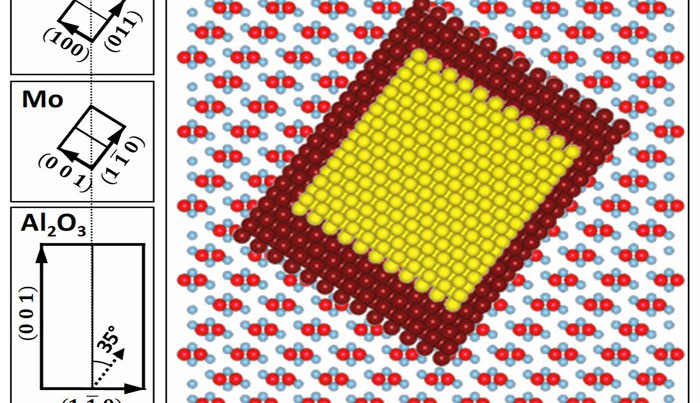Ruthenium: the latest Ferromagnetic material on the block

Researchers at the University of Minnesota have been able to demonstrate the chemical element ruthenium (Ru) is now the fourth element displaying ferromagnetic properties at room temperature. The breakthrough could eventually lead to its use in the production of novel sensors, computer memory devices and logic elements...
Researchers at the University of Minnesota have been able to demonstrate the chemical element ruthenium (Ru) is now the fourth element displaying ferromagnetic properties at room temperature. The breakthrough could eventually lead to its use in the production of novel sensors, computer memory devices and logic elements.
Ferromagnetism is a property of certain materials such as iron, to form permanent magnets or to be attracted to magnets. The discovery of magnetism was first documented over 2,500 years ago in Greece. There are only three elements in the periodic table which are ferromagnetic at room temperature: iron (Fe), cobalt (Co), and nickel (Ni). The rare-earth element gadolinium (Gd) nearly misses this room temperature criterion by just 8°C.
Magnetic materials are of great importance to modern industry and are used in many everyday applications such as sensors, electric motors, generators, hard drives and Spintronic storage. As thin-film technology has improved in recent decades it has allowed the structure of crystal lattices to be controlled so that geometries are produced that would not normally occur in nature. The study shows how Ru can be the fourth single-element ferromagnetic material by using ultra-thin films to force the ferromagnetic phase in the material. Details of the research are published in Nature Communications.
It took the team about two years to discover the correct way to grow the material and characterize its properties. It is anticipated that this discovery could have a significant impact on the future of the semiconductor industry. In addition to applications such as spintronics, it is thought the properties of this material will also lead to the development of new types of magnetic sensors. The ongoing hunt for novel materials has prompted research to verify theoretical predictions indicating certain non-ferrous materials such as Ru, palladium (Pd) and osmium (Os) can become ferromagnetic under certain conditions. From an application perspective, Ru is interesting because it does not oxidize easily and theoretical predictions indicate it is particularly temperature-stable, which is an important property allowing scaling of magnetic memories.
Ferromagnetism is a property of certain materials such as iron, to form permanent magnets or to be attracted to magnets. The discovery of magnetism was first documented over 2,500 years ago in Greece. There are only three elements in the periodic table which are ferromagnetic at room temperature: iron (Fe), cobalt (Co), and nickel (Ni). The rare-earth element gadolinium (Gd) nearly misses this room temperature criterion by just 8°C.
Magnetic materials are of great importance to modern industry and are used in many everyday applications such as sensors, electric motors, generators, hard drives and Spintronic storage. As thin-film technology has improved in recent decades it has allowed the structure of crystal lattices to be controlled so that geometries are produced that would not normally occur in nature. The study shows how Ru can be the fourth single-element ferromagnetic material by using ultra-thin films to force the ferromagnetic phase in the material. Details of the research are published in Nature Communications.
It took the team about two years to discover the correct way to grow the material and characterize its properties. It is anticipated that this discovery could have a significant impact on the future of the semiconductor industry. In addition to applications such as spintronics, it is thought the properties of this material will also lead to the development of new types of magnetic sensors. The ongoing hunt for novel materials has prompted research to verify theoretical predictions indicating certain non-ferrous materials such as Ru, palladium (Pd) and osmium (Os) can become ferromagnetic under certain conditions. From an application perspective, Ru is interesting because it does not oxidize easily and theoretical predictions indicate it is particularly temperature-stable, which is an important property allowing scaling of magnetic memories.
